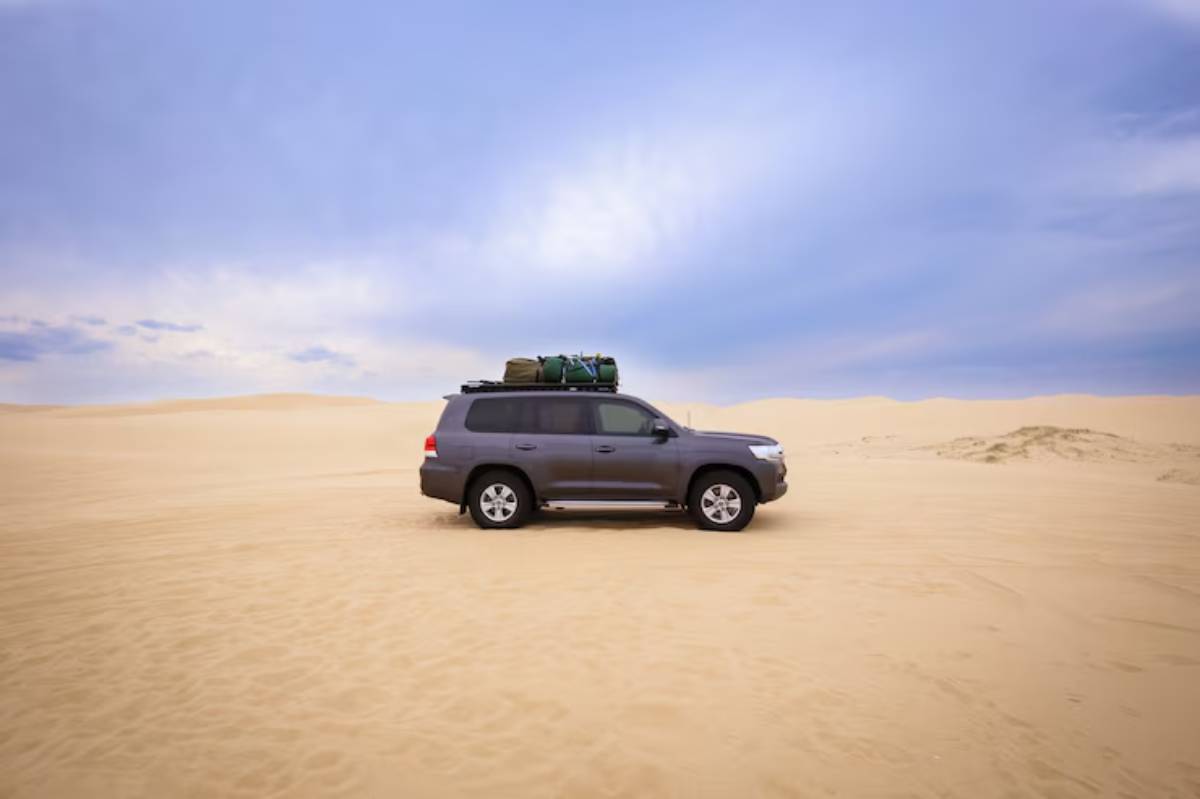
Understanding Trail Difficulty Ratings
You’ve found a trail that looks stunning—winding through hills, crossing streams, maybe a bit rocky. But then you spot the rating ‘Moderate’ or ‘Hard’. What exactly does that mean? Is your vehicle ready? Are you?
Knowing how to read and understand trail difficulty ratings isn’t just for seasoned off-roaders. It’s essential knowledge for anyone venturing beyond the tarmac. These ratings aren’t about bragging rights—they’re about preparation, safety, and making sure your trip is enjoyable rather than stressful.
Whether you’re a new 4×4 owner exploring your first dirt track or an experienced overlander plotting your next big route, this guide will break down the core 4×4 trail levels, how they’re determined, and how to apply them to your own route planning safety.
Why Trail Ratings Matter for Off-Road Travel
Trail ratings provide a common language to help travellers assess risk and readiness. Without them, you’re guessing at what lies ahead—something that can quickly turn a scenic drive into a recovery mission.
Benefits of Understanding Trail Ratings:
- Match the trail difficulty to your skill level and vehicle
- Avoid unnecessary wear, breakdowns, or recoveries
- Plan timelines more accurately
- Improve confidence, decision-making, and group dynamics
Using trail ratings is one of the simplest ways to travel smarter and safer.
Common Trail Rating Systems Explained
There isn’t a single global rating scale, but most fall into one of a few core frameworks.
1. The Numeric Scale (1–10 or 1–5)
Often used by clubs and forums.
- 1–2: Easy gravel or graded dirt road
- 3–4: Light obstacles, occasional ruts or water crossings
- 5–6: Loose rocks, moderate climbs, off-camber terrain
- 7–8: Steep hills, rocks, deep ruts, potential scraping
- 9–10: Technical rock crawling, winching often required
2. Colour Codes (Green, Blue, Black)
Borrowed from ski run grading and common in Australia, New Zealand, and parts of the US.
- Green (Easy): Suited to AWDs or stock 4x4s
- Blue (Moderate): Requires low range, more clearance
- Black (Difficult): Technical driving, lockers often recommended
3. Descriptive Scales (e.g., Easy/Moderate/Hard/Extreme)
Used by apps like onX and some tourism boards.
- Offer a quick idea without numeric specificity
- Combine the terrain with the expected skill level
Whichever system is used, consistency can vary—especially across regions. Always verify with recent trail reports or local knowledge.

Factors That Influence Trail Ratings
Understanding what goes into a rating helps you judge real-world trail conditions.
Key Trail Elements:
- Surface Type: Sand, rock, clay, gravel, mud
- Incline and Decline: Steepness, exposure, braking surface
- Obstacles: Steps, ledges, washouts, water crossings
- Width and Clearance: Pinstripes, tight trees, shelf roads
- Traction Conditions: Wetness, loose rock, tyre grip
- Risk Factors: Roll-over potential, recovery difficulty
These elements are dynamic. Rain, snow, or traffic can push a moderate trail into Difficulty overnight.
Matching Trail Levels to Vehicle Capability
It’s not just about the trail—your setup matters too.
Consider:
- Tyres: All-terrain or mud terrain? PSI capability?
- Clearance: Ground height, approach/departure angles
- Drivetrain: AWD, part-time 4WD, diff locks
- Modifications: Lift kits, rock sliders, snorkels
- Weight: Fully loaded vs day trip trim
A stock SUV may handle some Blue routes, while a lifted dual-cab might fly through Blacks. But your skills should always match the trail.
If you’re upgrading your setup, our guide to the best brush guards and bumpers is a good place to start reinforcing your front end.
How to Use Trail Ratings in Route Planning
Trail ratings are a planning tool, not just a challenge rating.
Smart Use Includes:
- Setting expectations: Time, fatigue, gear needed
- Pacing: Plan longer travel times on difficult tracks
- Backups: Have easier alternate routes if conditions change
- Permits and Restrictions: Harder trails may have seasonal closures or vehicle rules
Use trail apps like Gaia GPS, onX Offroad, or Hema Maps that integrate ratings and overlays.
Pair these tools with your itinerary by referencing our multi-day off-road adventure guide, which explains how to build routes that match your comfort and skill level.
Real-World Example: Two Drivers, One Trail
Let’s say a Moderate (Blue) trail traverses a forest ridge with occasional rock shelves and washouts.
- Driver A has a stock SUV and limited trail experience. For them, this trail becomes borderline Difficult. They air down, take it slow, and spot through one tricky section.
- Driver B has a lifted Hilux, lockers, and two years of weekly trail driving. They cruise it in under two hours with minimal input.
Conclusion: The trail is the same. The rating is a guide. But preparedness transforms the experience.
Tips for Re-Evaluating Trail Ratings in Real Time
Always be willing to adapt.
Watch For:
- Washed-out ruts or new erosion
- Crowded trailheads (overuse = degraded conditions)
- Blocked access (fallen trees, closed gates)
- Unclear signage or reroutes
If in doubt, walk the section before committing. Turning around is not failure—it’s sound judgment.
Conclusion: Know the Rating, Own the Ride
Trail ratings aren’t there to scare you—they exist to prepare you. With the right understanding of 4×4 trail levels, a working grasp of your rig’s capabilities, and careful use of route data, even challenging trails become well within reach.
Use the trail difficulty guide as a safety tool, not a badge. The goal is never just to ‘make it through’—it’s to enjoy the journey, avoid mishaps, and build skill responsibly.
The best trail is one that challenges just enough and brings you back with more confidence than when you set out.


